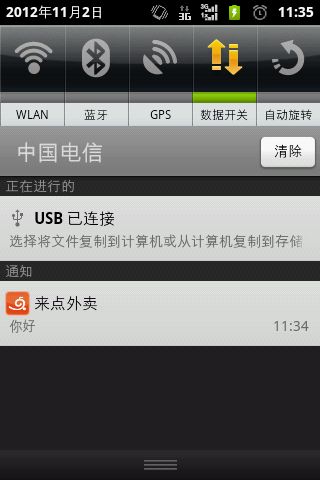java远程调用JPush极光推送api
谢谢大家关注此博文,很多人都问源码,但是很抱歉,源码已经找不到了,具体可以参考官网的api,里面很详细的。
调用JPush推送的api,官网上已经有很详细的说明了。这里主要描述一下我在调用过程中遇到的问题,
比如
我的HttpClient不支持https的请求、
参数配置错误 和 验证错误 等等。
开发的时候需要引用appache的包commons-httpclient.jar 、commons-codec.jar、commons-logging.jar这些包可以到官网上下载,如果有需要的话也我也可以发给你。
引入上述这些包之后,就可以进行开发了。
这里需要特别说明的两点是:
1、通过 HttpClient client = new DefaultHttpClient(); 获得HttpClient对象不支持https,需要自己重写。
2、我们的MD5编码要和服务器那边的一样。(我用我自己写的MD5编码验证的时候,总是验证失败,后来跟他们的技术人员要了他们的md5的实现方式就通过验证了)
好了,废话不多说了,接下来是贴代码的时候了:
类MySSLSocketFactory用来实现对https的支持
import java.io.IOException;
import java.net.Socket;
import java.net.UnknownHostException;
import java.security.KeyManagementException;
import java.security.KeyStore;
import java.security.KeyStoreException;
import java.security.NoSuchAlgorithmException;
import java.security.UnrecoverableKeyException;
import java.security.cert.CertificateException;
import java.security.cert.X509Certificate;
import javax.net.ssl.SSLContext;
import javax.net.ssl.TrustManager;
import javax.net.ssl.X509TrustManager;
import org.apache.http.conn.ssl.SSLSocketFactory;
public class MySSLSocketFactory extends SSLSocketFactory {
SSLContext sslContext = SSLContext.getInstance("TLS");
public MySSLSocketFactory(KeyStore truststore) throws NoSuchAlgorithmException, KeyManagementException, KeyStoreException, UnrecoverableKeyException {
super(truststore);
TrustManager tm = new X509TrustManager() {
public void checkClientTrusted(X509Certificate[] chain, String authType) throws CertificateException {
}
public void checkServerTrusted(X509Certificate[] chain, String authType) throws CertificateException {
}
public X509Certificate[] getAcceptedIssuers() {
return null;
}
};
sslContext.init(null, new TrustManager[] { tm }, null);
}
@Override
public Socket createSocket(Socket socket, String host, int port, boolean autoClose) throws IOException, UnknownHostException {
return sslContext.getSocketFactory().createSocket(socket, host, port, autoClose);
}
@Override
public Socket createSocket() throws IOException {
return sslContext.getSocketFactory().createSocket();
}
}
类ClientUtil 获取可以支持https的HttpClient对象,调用 MySSLSocketFactory 来取得
import java.security.KeyStore;
import org.apache.http.HttpVersion;
import org.apache.http.client.HttpClient;
import org.apache.http.conn.ClientConnectionManager;
import org.apache.http.conn.scheme.PlainSocketFactory;
import org.apache.http.conn.scheme.Scheme;
import org.apache.http.conn.scheme.SchemeRegistry;
import org.apache.http.conn.ssl.SSLSocketFactory;
import org.apache.http.impl.client.DefaultHttpClient;
import org.apache.http.impl.conn.tsccm.ThreadSafeClientConnManager;
import org.apache.http.params.BasicHttpParams;
import org.apache.http.params.HttpParams;
import org.apache.http.params.HttpProtocolParams;
import org.apache.http.protocol.HTTP;
public class ClientUtil {
public static HttpClient getNewHttpClient() {
try {
KeyStore trustStore = KeyStore.getInstance(KeyStore.getDefaultType());
trustStore.load(null, null);
SSLSocketFactory sf = new MySSLSocketFactory(trustStore);
sf.setHostnameVerifier(SSLSocketFactory.ALLOW_ALL_HOSTNAME_VERIFIER);
HttpParams params = new BasicHttpParams();
HttpProtocolParams.setVersion(params, HttpVersion.HTTP_1_1);
HttpProtocolParams.setContentCharset(params, HTTP.UTF_8);
SchemeRegistry registry = new SchemeRegistry();
registry.register(new Scheme("http", PlainSocketFactory.getSocketFactory(), 80));
registry.register(new Scheme("https", sf, 443));
ClientConnectionManager ccm = new ThreadSafeClientConnManager(params, registry);
return new DefaultHttpClient(ccm, params);
} catch (Exception e) {
e.printStackTrace();
return new DefaultHttpClient();
}
}
}
接下来就是调用JPush的api来推送消息了
import java.util.ArrayList;
import java.util.List;
import org.apache.http.HttpEntity;
import org.apache.http.HttpResponse;
import org.apache.http.client.HttpClient;
import org.apache.http.client.entity.UrlEncodedFormEntity;
import org.apache.http.client.methods.HttpPost;
import org.apache.http.message.BasicNameValuePair;
import org.apache.http.util.EntityUtils;
/**
* 调用远程api实现推送
* @author naiyu
*
*/
public class PushMsgUtil {
// public static final String PUSH_URL = "https://api.jpush.cn:443/sendmsg/sendmsg";
public static final String PUSH_URL = "http://api.jpush.cn:8800/sendmsg/sendmsg";
public static void pushMsg(String msg) {
BasicNameValuePair name = new BasicNameValuePair("username", "test"); //用户名
BasicNameValuePair sendno = new BasicNameValuePair("sendno", "3621"); // 发送编号。由开发者自己维护,标识一次发送请求
BasicNameValuePair appkeys = new BasicNameValuePair("appkeys", "your appkeys"); // 待发送的应用程序(appKey),只能填一个。
BasicNameValuePair receiver_type = new BasicNameValuePair("receiver_type", "4");
//验证串,用于校验发送的合法性。
BasicNameValuePair verification_code = new BasicNameValuePair("verification_code", getVerificationCode());
//发送消息的类型:1 通知 2 自定义
BasicNameValuePair msg_type = new BasicNameValuePair("msg_type", "1");
BasicNameValuePair msg_content = new BasicNameValuePair("msg_content", msg);
//目标用户终端手机的平台类型,如: android, ios 多个请使用逗号分隔。
BasicNameValuePair platform = new BasicNameValuePair("platform", "android");
List<BasicNameValuePair> datas = new ArrayList<BasicNameValuePair>();
datas.add(name);
datas.add(sendno);
datas.add(appkeys);
datas.add(receiver_type);
datas.add(verification_code);
datas.add(msg_type);
datas.add(msg_content);
datas.add(platform);
try {
HttpEntity entity = new UrlEncodedFormEntity(datas, "utf-8");
HttpPost post = new HttpPost(PUSH_URL);
post.setEntity(entity);
HttpClient client = ClientUtil.getNewHttpClient();
HttpResponse reponse = client.execute(post);
HttpEntity resEntity = reponse.getEntity();
System.out.println(EntityUtils.toString(resEntity));
} catch (Exception ex) {
ex.printStackTrace();
}
}
private static String getVerificationCode() {
String username = "test"; //username 是开发者Portal帐户的登录帐户名
String password = "pasword";
int sendno = 3621;
int receiverType = 4;
String md5Password = StringUtils.toMD5(password);; //password 是开发者Portal帐户的登录密码
String input = username + sendno + receiverType + md5Password;
String verificationCode = StringUtils.toMD5(input);
return verificationCode;
}
public static void main(String[] args) {
String msg = "{\"n_title\":\"来点外卖\",\"n_content\":\"你好\"}";
System.out.println(msg);
PushMsgUtil.pushMsg(msg);
}
}
运行成功:
附上StringUtils,java
import java.security.MessageDigest;
public class StringUtils {
private final static String[] hexDigits = { "0", "1", "2", "3", "4", "5",
"6", "7", "8", "9", "A", "B", "C", "D", "E", "F" };
private static String byteArrayToHexString(byte[] b) {
StringBuffer resultSb = new StringBuffer();
for (int i = 0; i < b.length; i++) {
resultSb.append(byteToHexString(b[i]));
}
return resultSb.toString();
}
private static String byteToHexString(byte b) {
int n = b;
if (n < 0)
n = 256 + n;
int d1 = n / 16;
int d2 = n % 16;
return hexDigits[d1] + hexDigits[d2];
}
public static String toMD5(String origin) {
String resultString = null;
try {
resultString = new String(origin);
MessageDigest md = MessageDigest.getInstance("MD5");
resultString = byteArrayToHexString(md.digest(resultString
.getBytes()));
} catch (Exception ex) {
ex.printStackTrace();
}
return resultString;
}
}
